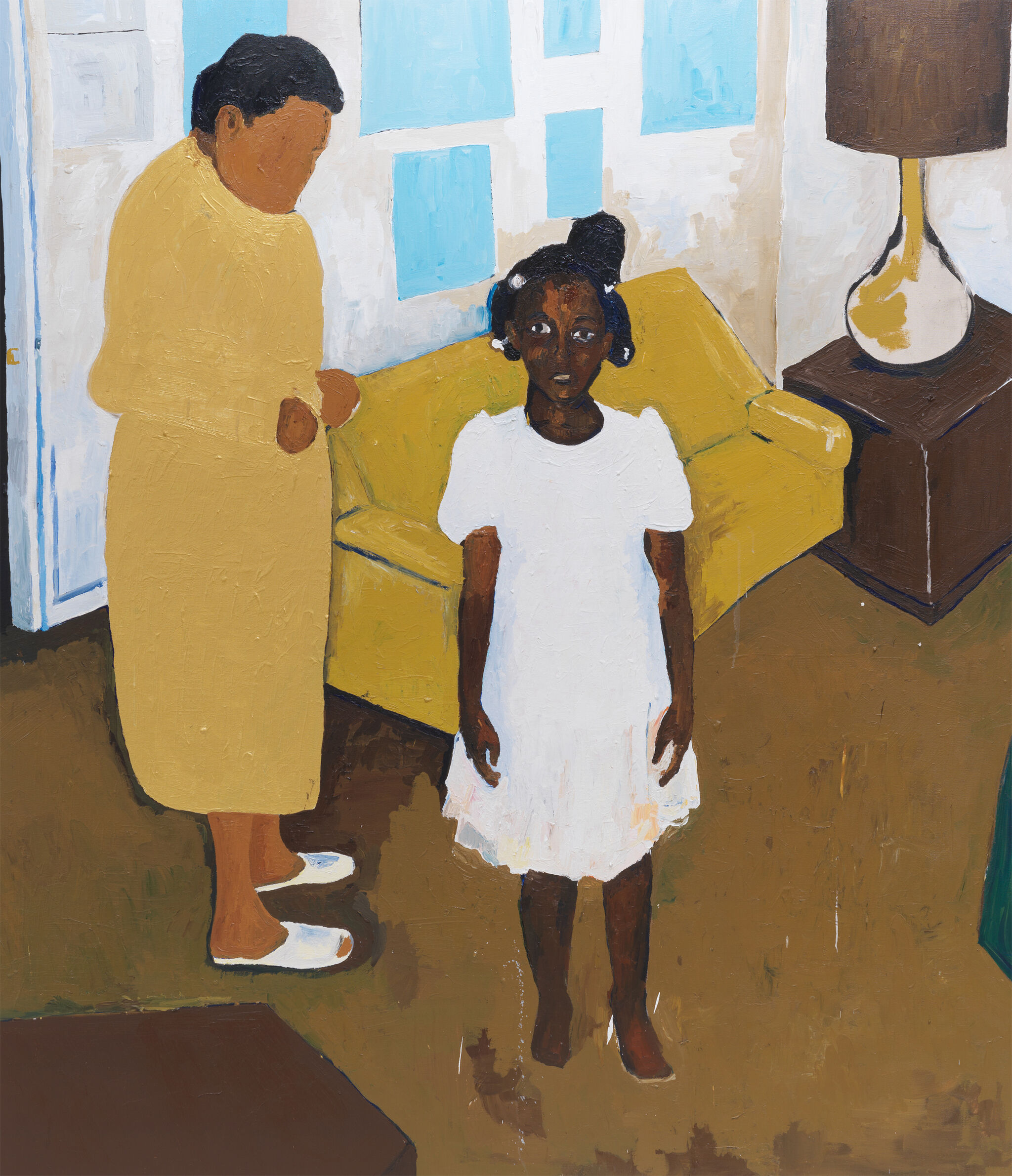Picturing People
Taylor’s figurative paintings encompass a wide spectrum of individuals, including family members, neighbors in Los Angeles from diverse social standings, victims of police brutality, celebrities, and historical figures. Taylor reflects, “I’m always studying people, and I’m never done. That’s probably why I’m always painting people. I don’t know what it is, but I can never get enough.”
The domestic scene in Henry Taylor’s the dress, ain’t me, 2011, unfolds in a simple brown-carpeted living room. Taylor’s mother wears a yellow ochre dress and white slippers and hovers over his daughter. She wears a brilliantly white dress and gazes directly ahead. Her uncomfortable stance, her arms hanging alongside her, alludes to the title. Behind them is a yellow couch that matches his mother’s dress, a brown end table and lamp. Blue squares on white background wall subtly imply photos or paintings.
Activities
How would you communicate someone’s essence?
Taylor’s figurative paintings range from detailed likenesses to ethereal depictions. He emphasizes, “What I know to be the truth…When you see the truth of the person, it’s gonna take you to another level.” Ask students to think about a person important to them. It could be a personal or a public figure. Have them discuss their individual’s most essential qualities. Instruct them to make a list of words that express their individuals. Invite students to create a work of prose, poetry, or playwriting that celebrates their chosen person.
How could you portray a mood or feeling?
Not all of Taylor’s paintings are realistic. He describes, “You can just draw a head, or you can be intuitive and take that liberty." Have students discuss what it means to “portray” someone or something. Motivate them to expand their notions to include portraying a mood or feeling using painting supplies. Invite them to create an abstract painting that portrays their selected mood or feeling. Display the artworks and have a group discussion about their peers’ processes and interpretations.
How would you depict a classmate or close friend?
Henry Taylor paints his subjects in-person and from photographs and memory. Regarding painting, he states, “I just don’t know how it’s going to come out in the end, but I know that something is taking place when making a portrait. It varies from sitter to sitter, but you try to be honest, and think…” Ask students to interview a classmate or friend. Invite them to create an artwork using collage, drawing, painting, and/or photography to depict their unique subjects.
How could you express gender diversity?
Traditionally, dressing in society follows particular gender norms that define gender identities. Young people and adults use clothes to creatively affirm their own gender expressions. Have students discuss which clothing items and fashion styles they identify with and feel comfortable wearing. Based on their responses, invite students to create new wearable items from collected scrap materials and old clothes. Encourage them to put on a fashion show that represents their gender expressions.

